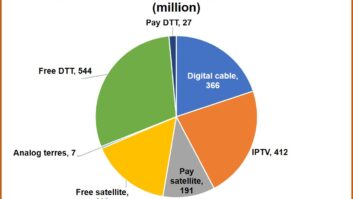
Millennials are a major threat to the future of traditional TV, according to research from L.E.K. Consulting.
The project followed the changes in media habits throughout six stages of life: at home with parents, students, flat sharing, getting your own place, young families (parents younger than 25), and young families (parents 26-34).
The analysis highlights the challenge that comes from millennials’ planned reduction in spend on pay TV, and the switch to internet-based OTT services like Amazon Prime and Netflix. Forty five per cent of millennials pre-family and 56 per cent of millennials with children currently have a pay-TV subscription, and 45 per cent of them either have or expect to have an OTT subscription in the next year.
Martin Pilkington, head of L.E.K.’s European media, entertainment and technology practice, said: “Our research has shattered the common assumption that once millennials are older and have their own children they revert to more traditional media consumption patterns.
“Our research findings are a wake-up call to the traditional media players that the change in consumption habits is coming faster and is far more pervasive than they might have thought.
“In this increasingly ‘on-demand’ world, the quality of content will be more important than ever before. The race is already on; a good illustration of the new dynamic being the very high level of investment in original content by Netflix and Amazon.”
The research project spanned 1,308 millennials and 685 non-millennials living across the UK.
Further findings from the research project included:
– Amongst the millennial generation, brands such as Google, YouTube, Amazon and Netflix have twice the affinity rating of even the strongest traditional TV brands
– Millennials across all life stages have much higher penetration of online video subscription services – 38 per cent for millennials pre-family and 32 per cent for millennials with kids versus 15 re for non-millennials
– Free online video, especially YouTube, is a vital channel for millennials; nearly half of them (46 per cent) use YouTube every day versus 12 per cent of non-millennials
– Less than half of millennials’ video viewing is on the TV, as they prefer to watch on laptops, tablets and mobile. This continues for millennials with families. It drops to 28 per cent for students and flat sharers, but is still only 47 per cent for millennial families versus 74 per cent for non-millennials







